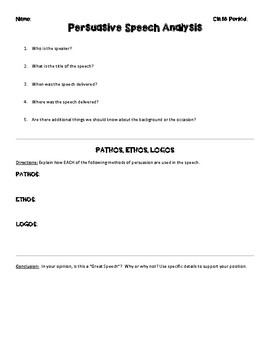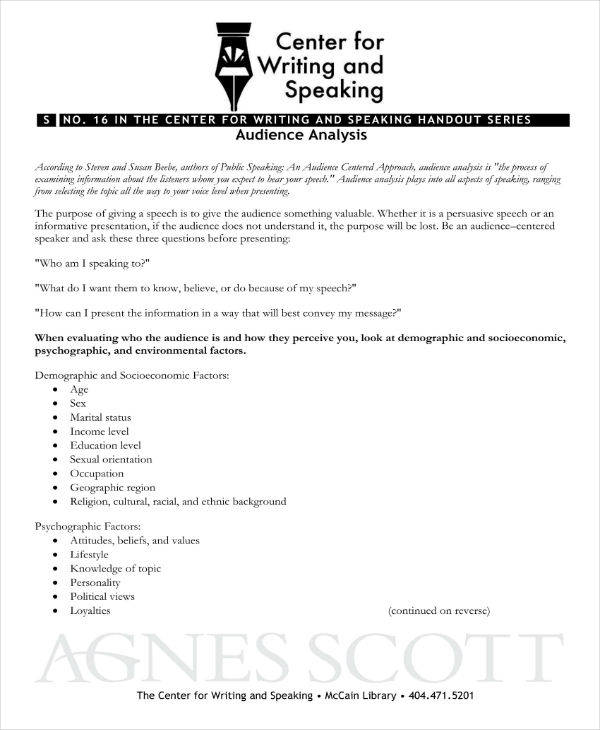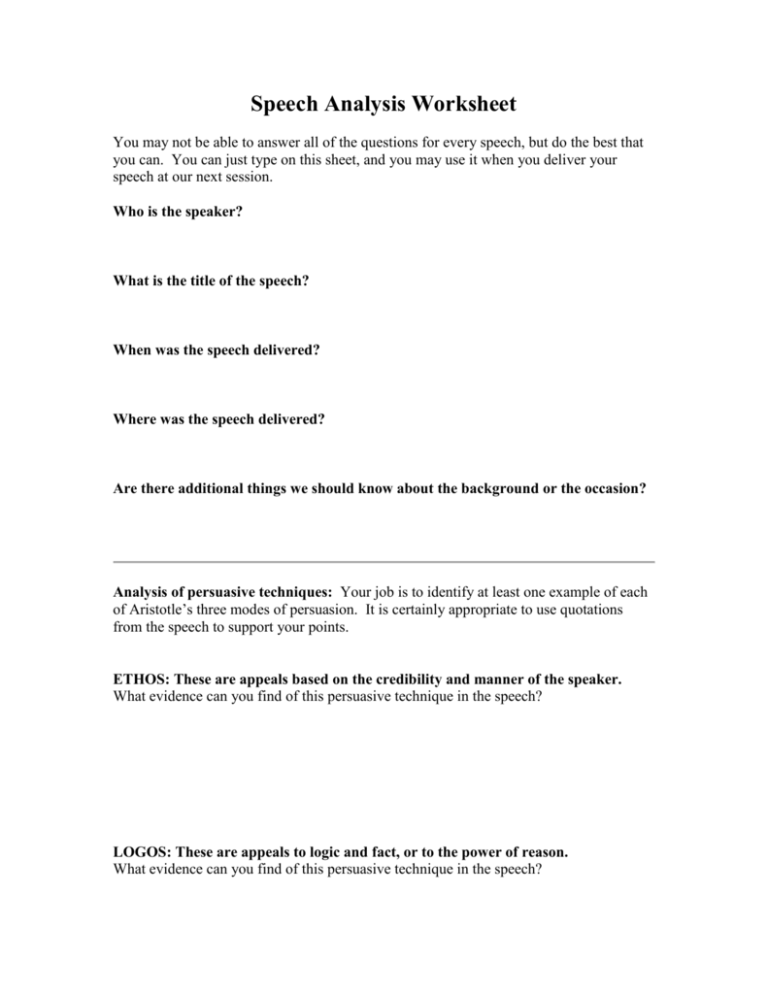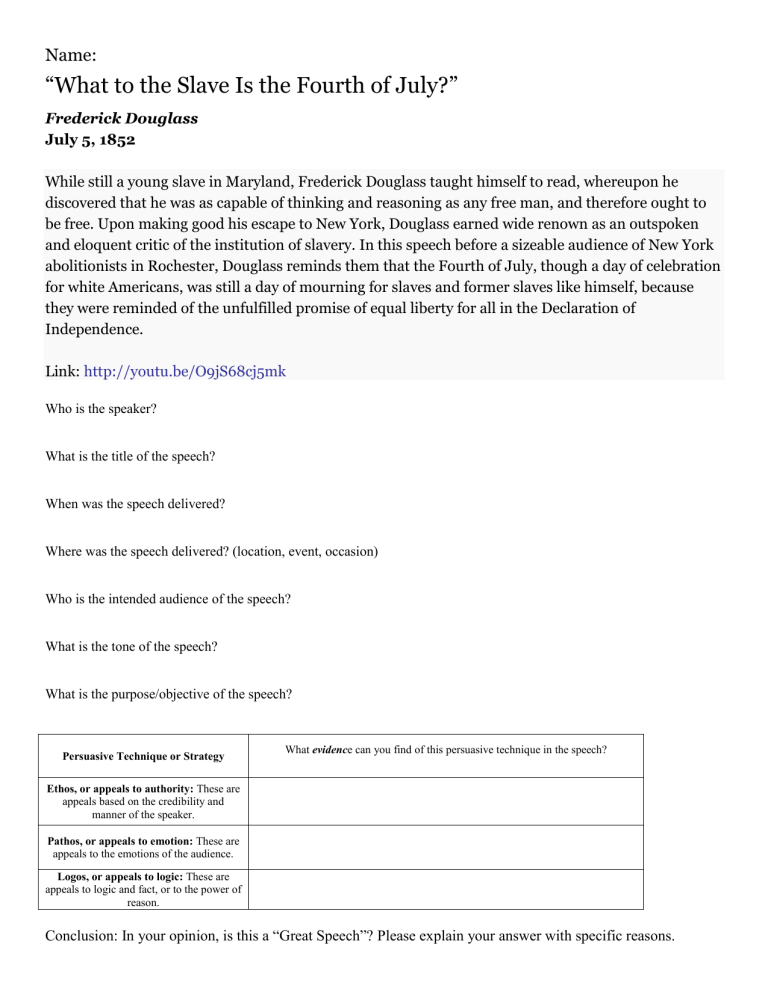A speech analysis template is a tool that can be used to analyze and evaluate the effectiveness of a spoken message. This template can be used by public speaking coaches, educators, and students to identify the strengths and weaknesses of a speech, and to make recommendations for improvement.
The template typically includes a list of key components that should be evaluated in a speech, such as the introduction, main points, transitions, delivery, and conclusion. Each component is assessed based on specific criteria, such as clarity, organization, engagement, and impact.
To use the template, the evaluator listens to or reads the speech and makes notes on each component based on the criteria listed in the template. For example, in the introduction, the evaluator might consider whether the speaker effectively captured the audience's attention, provided a clear overview of the main points, and established the purpose of the speech. In the main points, the evaluator might look for evidence of logical organization, relevant supporting material, and clear transitions between points.
The delivery of a speech is also an important factor to consider when using a speech analysis template. This includes the speaker's tone, body language, eye contact, and vocal variety. A speaker who uses appropriate pauses, gestures, and facial expressions can enhance the impact of their message, while a monotone delivery or poor eye contact can distract from the content of the speech.
Finally, the conclusion of a speech is an opportunity to summarize the main points and leave a lasting impression on the audience. A strong conclusion ties together all of the main points, reaffirms the purpose of the speech, and inspires the audience to take action or think more deeply about the topic.
Overall, a speech analysis template is a valuable tool for evaluating the effectiveness of a spoken message. By considering the various components of a speech and the criteria listed in the template, the evaluator can provide constructive feedback and recommendations for improvement. This can help speakers to refine their public speaking skills and deliver more effective and impactful messages to their audiences.





